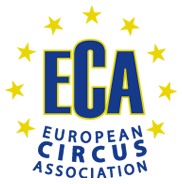ANIMAL WELFARE
10 Gute Gründe für Tiere im Circus (only German)
A magazine with 10 good reasons why animls belong in a circus.
To order copies of this brochure, please contact Planet Circus Service GmbH: mail@planet-circus.com.
We are working on other languages. As soon as they are ready, we put them online too.
Animals in the Circus
Traditionally, trained animals are a popular element of most circus shows. When Pilip Astley created the first modern circus back in 1768, riders and horses were the starting point. Until today the vast majority wants to see animals in the circus. A recent survey in Germany, for example, found that 85,5% of the population likes to see one or another kind of animals in the circus.
In times when natural environments of wildlife have become endangered, it is important to take charge of the animals in manmade environments. Close encounters with animals can support a better understanding of their needs and beauty. The circus can do this better than any stationary zoo, because circus animals are educated and stimulated in their physical, mental and intellectual development. The circus enriches their life. No other animal, for example, is better gymasticised than a High School horse. Working with the animals stimulates their intelligence, cares for occupation, offers challenges and rewards, keeping the animals fit and agile. Circus animals have positive experiences. Every day.
The European Circus Association expects its members to guarantee flawless husbandry for their charges and to observe certain standards when working with animals:
– adequate accommodation that respects the animals’ individual social behaviour
– transport according to the needs of the species
– a day to day occupation that offers surprises, challenges and changes for the animals
– a balanced diet based on the scientific findings of nutritional physiology
– comprehensive care (e.g. clean, comb, brush, shave, chiropody etc.), including veterinary care
– training and presentation only in a way corresponding to their dignity and nature
– abandonment of certain species that cannot be kept according to their specific needs
It is an artistic choice by the circus directors whether or not they want to present animals in their shows. The European Circus Association fights for their right to make this choice.
